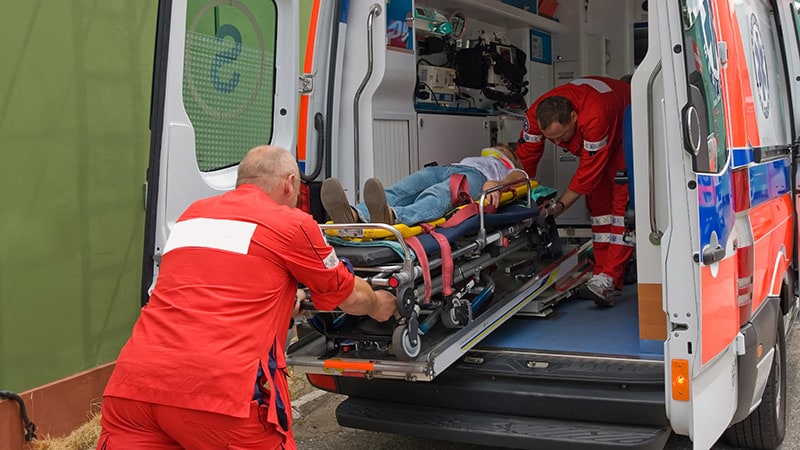Overcrowding in German Emergency Rooms: Distinguishing Genuine Emergencies from Non-Urgent Cases
핵심 개념
Approximately half of all patients visiting German emergency rooms do not have a genuine medical emergency, leading to overcrowding and long wait times. Educating the public on recognizing true emergencies and utilizing appropriate healthcare services is crucial.
초록
The article discusses the growing issue of overcrowding in German emergency rooms, where a significant portion of patients do not have genuine medical emergencies. According to Dr. Norbert Schütz, the director of geriatrics and rheumatology at Helios Dr. Horst Schmidt Hospital, around half of all patients in the emergency room do not have an urgent medical condition.
The article highlights the need to educate the public on recognizing true emergencies and utilizing the appropriate healthcare services, such as general practitioners or on-call physician services, instead of automatically going to the emergency room. The German Society of Internal Medicine (DGIM) aims to address this issue through their Patient Day, where they provide information on identifying emergencies, especially in children and mental health cases.
The article also presents findings from the PiNo Nord cross-sectional study, which examined the reasons why patients visit the emergency room. The study found that only 4 out of 10 cases were genuine emergencies, with the strongest predictors for low subjective treatment urgency being musculoskeletal trauma, skin afflictions, and the unavailability of an open general practitioner's office.
The article emphasizes that the general practitioner should be the first point of contact, as they have the most background information on the patient. However, in cases of severe health impairment, such as chest pain, circulatory disorders, breathing difficulties, or severe bleeding, the emergency department should be utilized.
Which Emergencies Are Genuine Emergencies?
통계
Only 4 out of 10 cases in the emergency room are genuine emergencies.
54.7% of the surveyed patients indicated a low urgency of treatment.
41% of the patients visited the emergency room on their own initiative.
17% of the patients were referred or entrusted by their general practitioner.
8% of the patients were referred by a specialist in the emergency room.
인용구
"In about half of all patients in the emergency room, there is no urgent medical emergency."
"Patients who come to the emergency room because they cannot get appointments with their general practitioner or specialist, for whatever reason, are no emergency. We also see this in the emergency room from time to time."
핵심 통찰 요약
by Ute 게시일 www.medscape.com 04-24-2024
https://www.medscape.com/viewarticle/which-emergencies-are-genuine-emergencies-2024a10007wx
더 깊은 질문
How can healthcare systems and policymakers work together to improve the flow of patients and ensure that emergency resources are used appropriately?
To improve the flow of patients and ensure the appropriate use of emergency resources, healthcare systems and policymakers can collaborate on several initiatives. Firstly, implementing public education campaigns to raise awareness about what constitutes a genuine emergency can help reduce unnecessary visits to emergency rooms. This can be coupled with promoting the use of primary care providers as the first point of contact for non-urgent medical issues. Additionally, establishing clear referral pathways from primary care to specialists can streamline the process and prevent patients from bypassing appropriate channels. Policymakers can also incentivize the development of urgent care centers or telemedicine services to provide alternative options for patients with non-emergent conditions. By working together, healthcare systems and policymakers can create a more efficient and effective system for managing patient flow in emergency settings.
What are the potential consequences of overcrowding in emergency rooms, and how can they be mitigated?
Overcrowding in emergency rooms can have several negative consequences, including increased wait times, compromised patient safety, and heightened stress levels for healthcare providers. This can lead to delays in treatment, decreased quality of care, and a higher risk of medical errors. To mitigate these consequences, healthcare facilities can implement strategies such as optimizing staffing levels, improving patient flow processes, and enhancing communication between departments. Creating dedicated spaces for patients with non-urgent conditions, implementing triage systems to prioritize care based on severity, and utilizing technology to track and manage patient flow can also help alleviate overcrowding. By addressing the root causes of overcrowding and implementing targeted interventions, healthcare facilities can improve the overall efficiency and quality of care in emergency settings.
How can technology, such as telemedicine or online appointment booking, be leveraged to help patients access the right healthcare services more efficiently?
Technology, such as telemedicine and online appointment booking, can play a crucial role in helping patients access the right healthcare services more efficiently. Telemedicine allows patients to consult with healthcare providers remotely, reducing the need for in-person visits and enabling timely access to medical advice. This can be particularly beneficial for patients with non-urgent conditions who may not require a physical examination. Online appointment booking systems can streamline the process of scheduling appointments, reducing wait times and ensuring that patients are seen by the appropriate provider in a timely manner. By leveraging technology, healthcare facilities can improve access to care, enhance patient satisfaction, and optimize resource utilization.
0
